CSotD: The Reality Issue
Skip to comments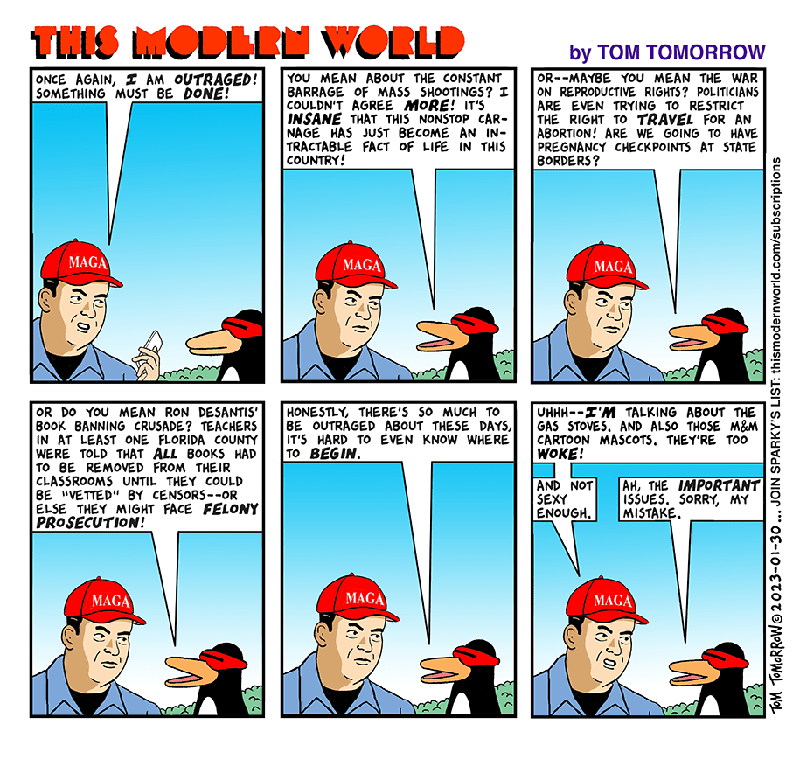
Tom Tomorrow sums up the bizarre problem of life in a country divided between two realities.
Sparky lays out a litany of abuses that ought to arouse at least concern, if not fury, in a civilized mind, only to discover that they bounce off because the person he is talking to lives in a totally other reality in which those things barely exist.
It is a world of alternative facts and alternative values, in which we don’t simply disagree on how to address a problem but whether the problem exists, and, if it does, whose fault it is.
The murder of Tyre Nichols provides yet another example, because not everyone accepts that his death was unjustified, or that it matters.
Brendan Nyhan often posts observations of our domestic goings-on with the phrase “What would you say if you saw it in another country?”
But the more divided we become, the more it begins to feel that we did see it, in Rwanda in 1994, when the civil war exploded in a flurry of genocide based on the firm belief and conviction on the part of the Hutu majority that the Tutsi were to blame for everything, and deserved to die.
We’re not there yet, but we are sinking into a moral swamp in which we don’t simply disagree but view each other as enemies.
Our fevered rhetoric may not inspire genocide, but it can push an unstable person over the edge, so that, as in the attempted murder of Paul Pelosi, there are plenty of people who will invent lies about the event and even praise the assailant.
It’s a world in which a significant percentage of the citizenship cling to, and trust in, news which either minimizes or ignores entirely the things that should outrage people.
So that, when a mentally ill teenager guns down a classroom full of students in Connecticut, some of us expect that surely now we will see change. But others insist that it didn’t happen at all.
Then, when it happens again in Uvalde, it turns into a discussion not of guns but of school construction.
And nothing happens anyway.
As Jimmy Margulies (KFS) puts it, federal legislators have a free pass to ignore the ongoing carnage. We now have an increasing number of legislators who were voted into office precisely because they will ignore the ongoing carnage.
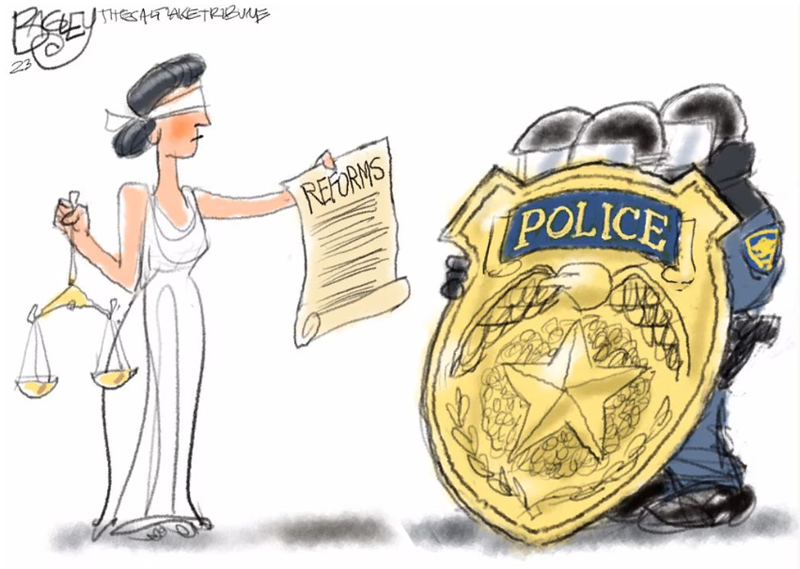
As Pat Bagley suggests, the police often seem more invested in resisting reform rather than looking to improve their performance.
I’ve told this story before, but, in 1968, I was in a peaceful anti-war march in Chicago that turned into a police riot, and I remember the cops who had been trailing our group pushing us back away from the bloodshed, begging us to stay out of it.
I have often wondered what happened to those “good cops” a few months later, when the Democratic National Convention turned into a bloodbath.
Did they resign? Did they just keep silent? Did they join in? Whatever they did, their decency and concern in May had no effect on what happened in August.
My other memory of the day was a carload of Black kids driving by, waving out the windows and shouting “Now you know! Now you know!”
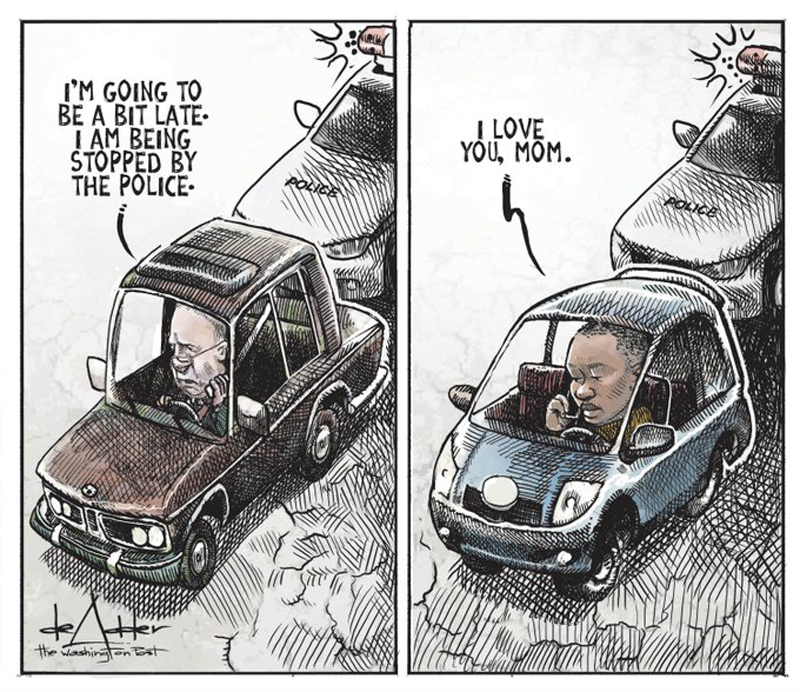
Now we knew, at least those of us there, but the lesson contained a central fallacy: All we needed to do was cut our hair and dress more conventionally and it all went away.
At which point we could become the fellow in the red car in Michael de Adder’s cartoon, while those young men simply became older versions of the fellow in the blue car.
It’s a constant. It’s a disgrace. But it’s a reality from which there seems no escape.
At least we got a sample. You can’t reach the people who don’t want to be reached, who dwell in an alternative reality in which empathy is derided as “being woke.”
Juxtaposition of the Day
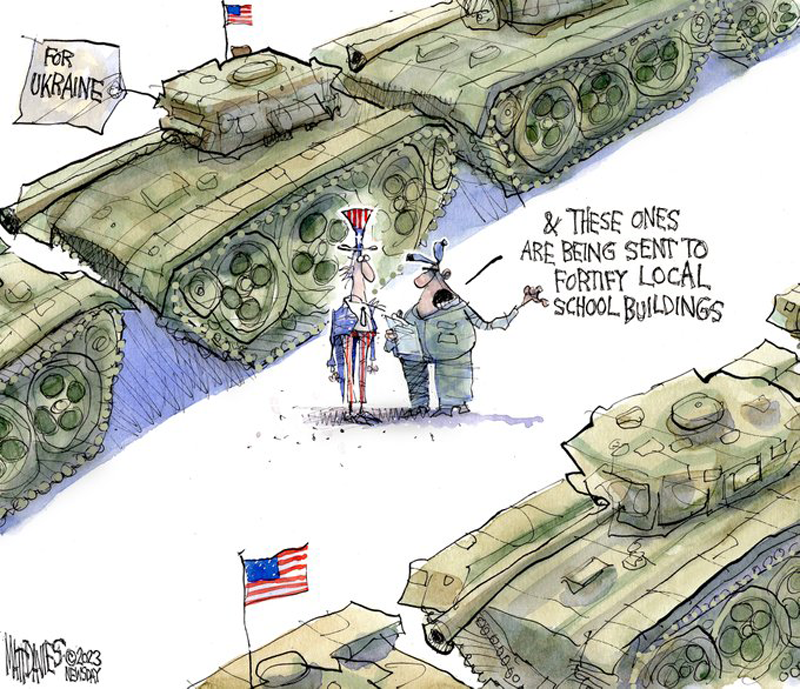
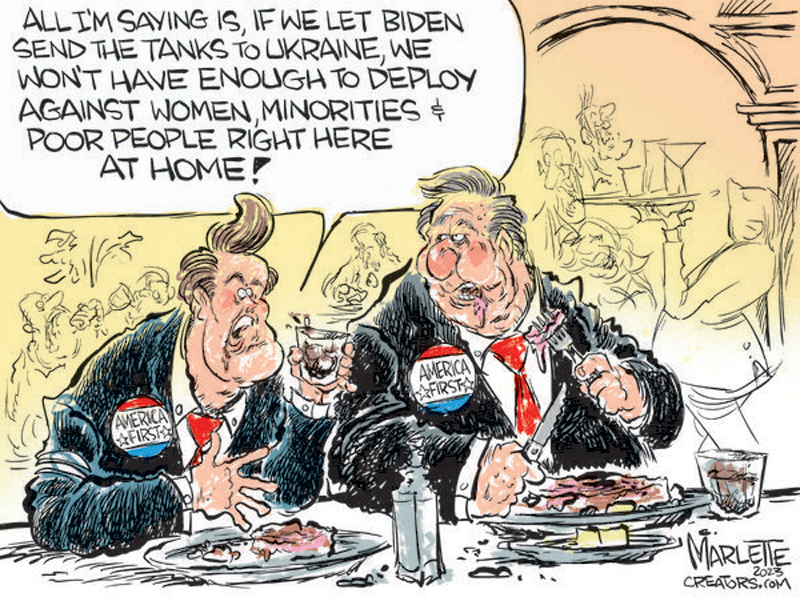
Which brings us to an odd juxtaposition, in which both cartoonists exaggerate the militarization of police, with Davies being somewhat closer to reality than Marlette.
We began giving military vehicles and weaponry to local police well before Trump began talking about shooting protestors and summarily executing drug dealers, and before Ted Cruz decided that the solution to school shootings was not to limit guns but to make schools more like penitentiaries.
It’s not just the military equipment. It’s the attitude.
There was a brief controversy in the late 70s when police and fire departments began adding American flags to their uniforms, and it wasn’t simply the anti-war people who objected. Vietnam vets also insisted that local means local and that neither cops nor firemen were military members.
Their voices barely made a ripple as police began to look less like the cop on the corner and more like the guards behind the Iron Curtain, and vehicles of war were, if not deployed regularly on the street, at least housed in the garage as inspiration.
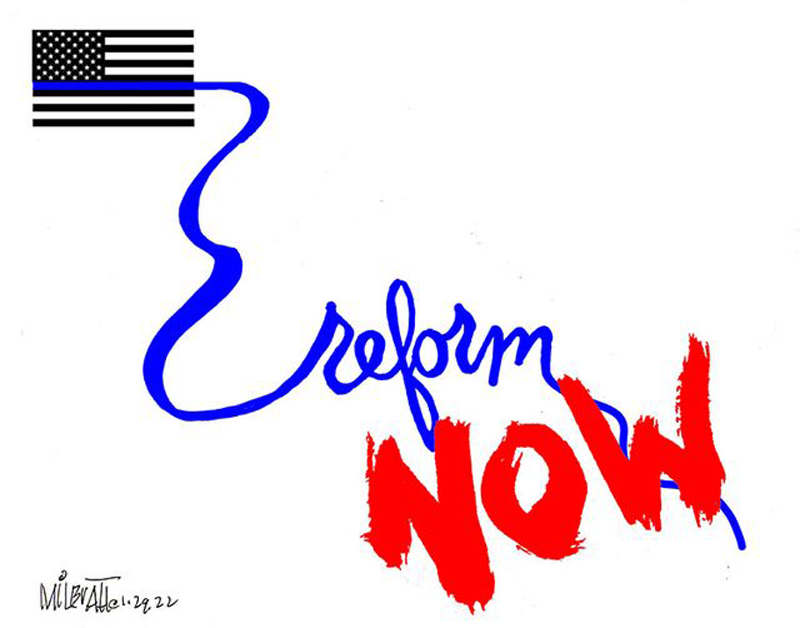
Deb Milbrath stretches the “Blue Lives Matter” icon into a demand for reform amid the blood, but it seems a futile plea in a world in which the same people who preach respect for the police make heroes of the mob that beat, wounded and even killed them on the steps of our nation’s capitol.
The motto “Defund the Police” was an ill-chosen, misleading, divisive turn of phrase that did more to reinforce opposition than to persuade reform.
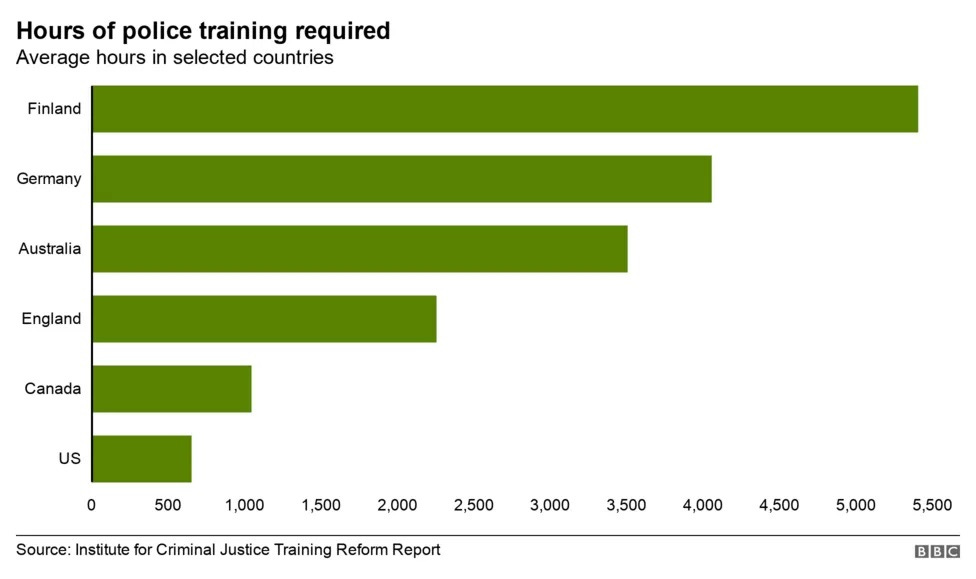
Noah Smith, by contrast, has written a well-considered opinion piece in which he calls for more funding, not for militarization but quite the opposite: For the kind of training other developed countries demand of their police.
He notes that, while our number of police is unremarkable given our population and economy, our rate of killings by police far outranks similar nations.
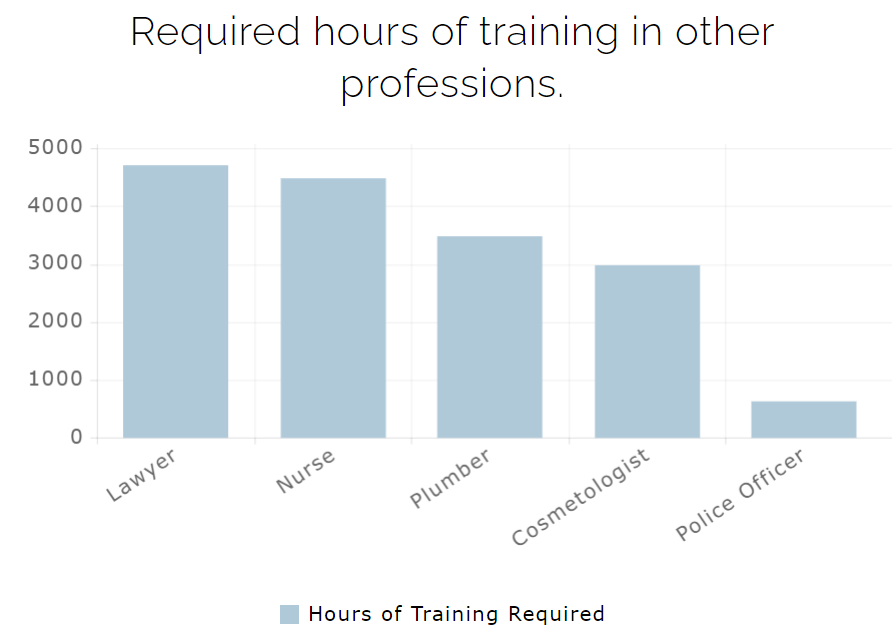
He sees the problem as the low level of training required, on average, for police here.

I’ve lived in places where State Troopers were required, at a minimum, to have four years of college, and I’ve lived in places where the local cops were bully boys.
IMHO, Smith is right that we’d do well to spend more money and develop a more professional public safety system.
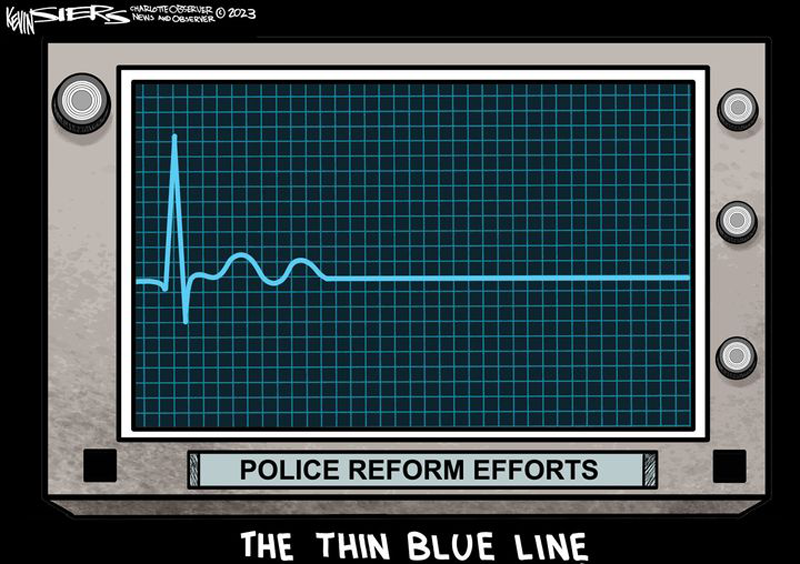
But, like Kevin Siers, I’m not going to hold my breath.
However, I can still join Dick Gregory in a dream from 1968:
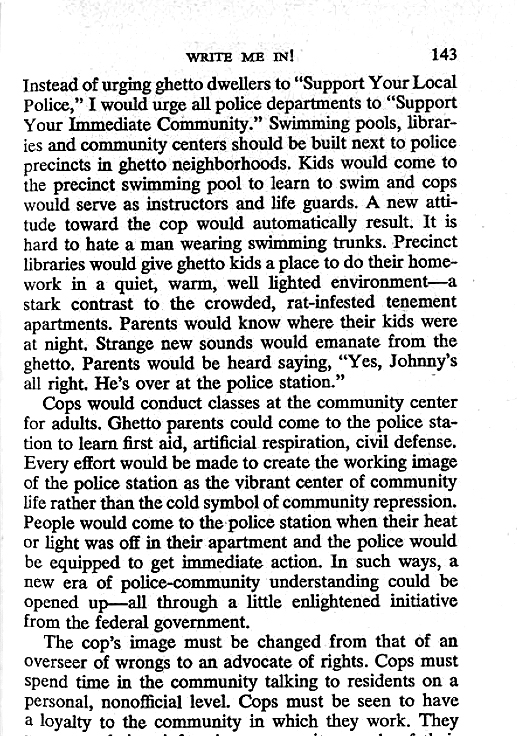


Comments 5
Comments are closed.